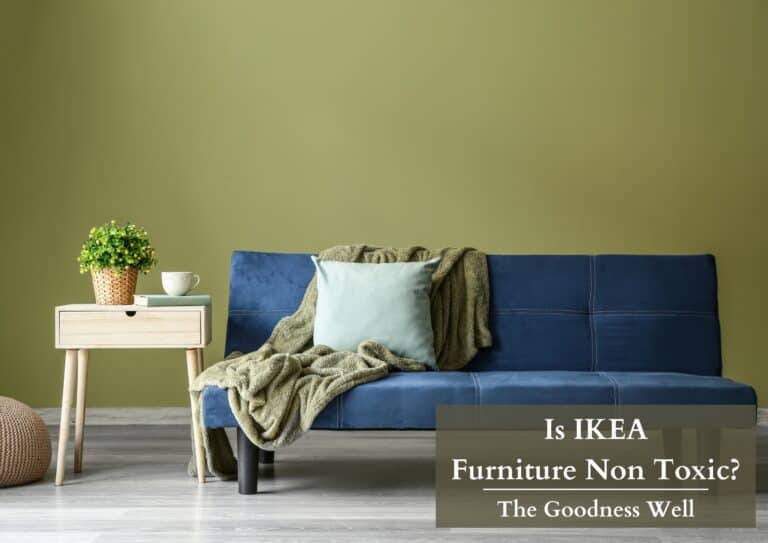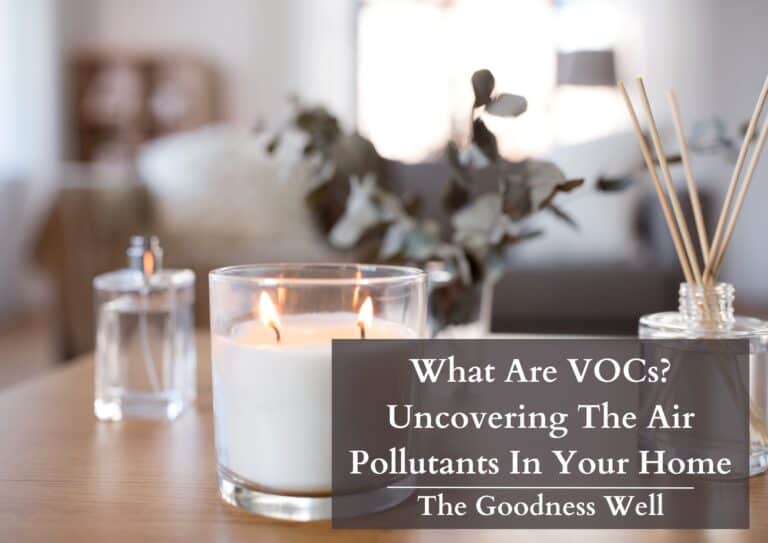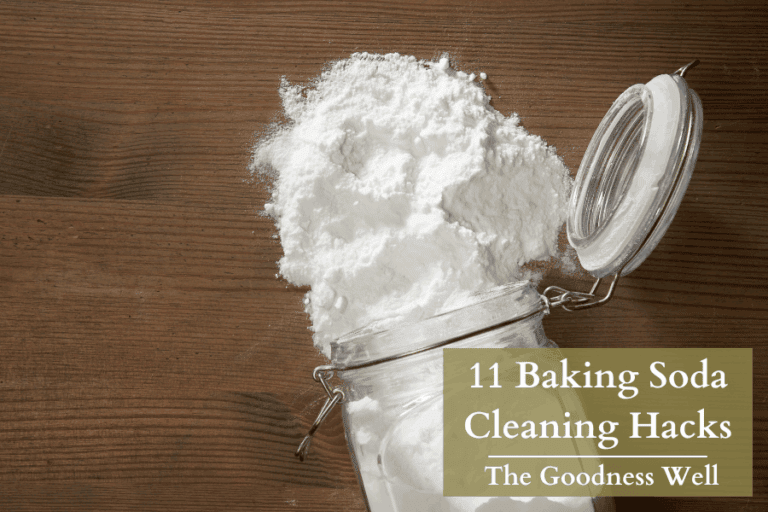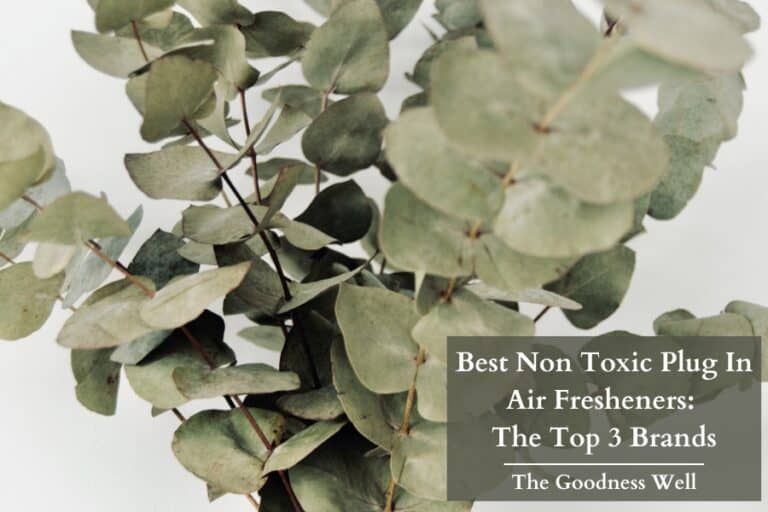Are Bath And Body Works Candles Actually Toxic?
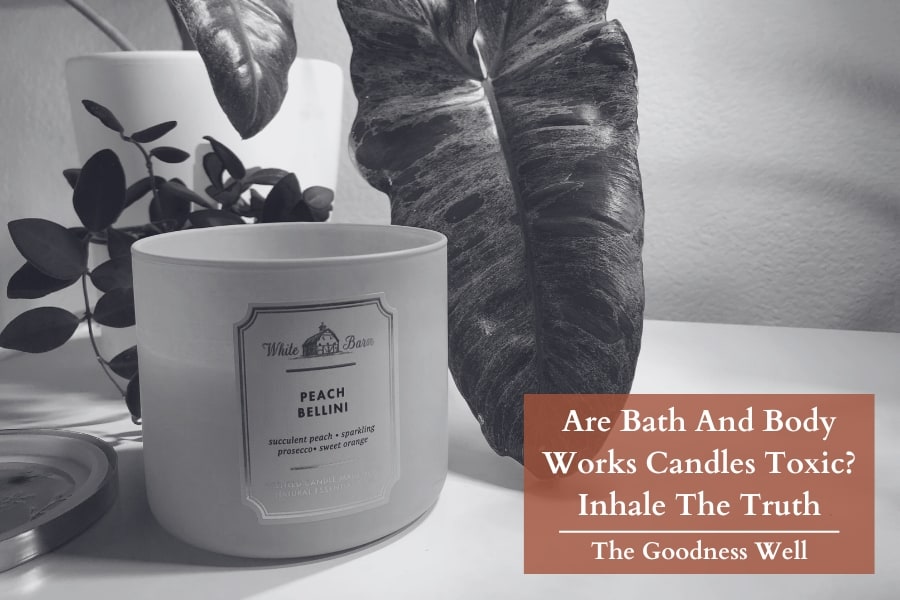
Let me be the first to tell you, that I was a Bath & Body Works (White Barn) girl through and through, looking forward to the semiannual sales, seasonal scented candle releases, and all…
That was… until I wasn’t.
Because like you, I began to wonder, “Are Bath and Body Works Candles Toxic?“
So I dug into TONS of research on their ingredients and that’s when our family and our once-favorite candle makers went through an ugly breakup 💔
We’ve got the answers and all the information you need to know about Bath and Body Works candles.
TL;DR
Yes, Bath and Body Works Candles are toxic. While these candles smell great, they contain toxic chemicals like paraffin (petroleum byproduct), fragrance (known hormone disruptor), and a few other questionable ingredients linked to health risks. Even with public concern, Bath and Body Works has remained untransparent about its ingredients and even uses manipulative tactics like greenwashing. 👎🏽
Getting Into The Ingredients 🗒️
Let’s look at this example of Bath and Body Works Candle Paris Cafe (This used to be a favorite of mine 😭)…
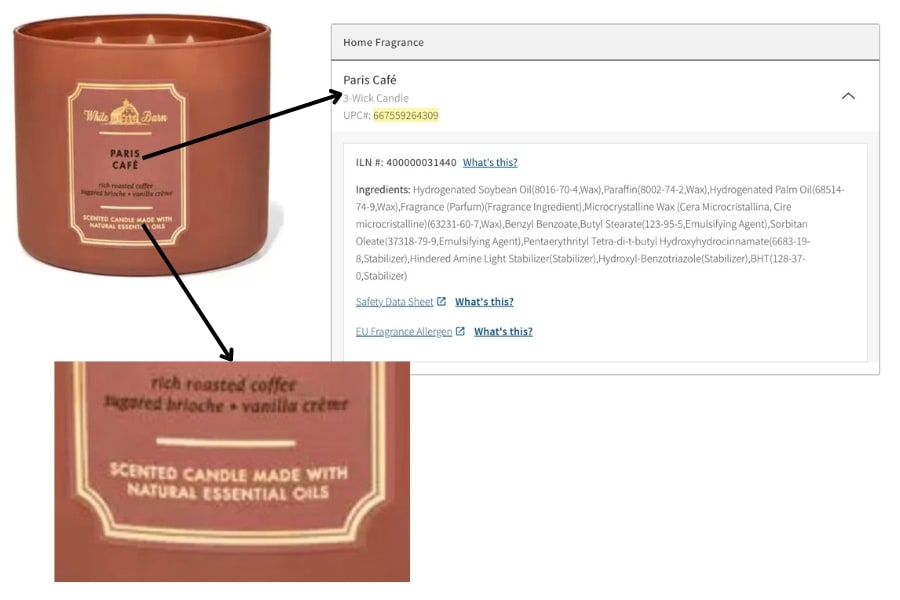
On the front label of the candle, you can see it says “made with natural essential oils” but we both know you should always do your own research. So that’s what we did.
If you go to the Bath and Body Works(White Barn) website, you’ll see the actual list of things this candle is really made with.
Ingredients for the Paris Cafe candle include:
Let’s go through a few of these ingredients 👆🏽and discuss what makes them so harmful.
Paraffin Wax
First up, paraffin wax, a byproduct of petroleum.
When paraffin wax is burned it releases particulate matter (PM) which emits volatile organic compounds(VOCs) and polycyclic aromatic hydrocarbons (PAHs), all classified as human carcinogens by the International Agency for Research on Cancer (IARC).
However, the amount of these chemicals released isn’t enough to put you at serious risk for any health problems.
Contrary to many other sources out there, there actually isn’t any concrete evidence that proves paraffin wax is directly toxic to human health.
Fragrances
Next, let’s take a look at the mysteriously generic term “Fragrance (Parfum)“.
This ingredient is the main reason we avoid Bath and Body Works products.
The problem is that we don’t really know specifically what the full list of ingredients is because companies like Bath and Body Works aren’t required to disclose them and can hide chemicals behind the term “fragrance”.
According to research from the EWG, there can be over 3,000 chemicals hidden within the term fragrance, including phthalates a known hormone, and endocrine disruptors that are linked to reproductive system birth defects.
- Benzyl benzoate: This ingredient can be irritating to the skin and eyes, and there is some concern that it may be harmful to the developing nervous system in children.
- Cinnamal: A fragrance chemical linked to skin irritation and allergic reactions in some people.
- Coumarin: A naturally occurring compound found in some plants that can damage the liver and kidneys at high doses.
Other Ingredients
Next, we’ll take a look at the additives in Bath and Body Works Candles.
Additives like BHT, and other stabilizers and dyes are all synthetic and anything synthetic most likely does way more harm than good.
BHT Stabilizer (Butylated hydroxytoluene) is yet another endocrine disruptor, that can also impact testosterone levels and affect sperm quality.
The dyes used in Bath and Body Works candles are synthetic and can release VOC toxins when burned. Specifically, for sensitive groups, synthetic dyes can be irritating and cause allergic reactions.
Lead-Core Wicks
So lastly, Bath & Body Works candles do claim to now make their candles without lead.
But I will say that this only came about when the U.S. Consumer Product Safety Commission (CPSC) banned lead-core wicks and candles with lead-cored wicks.
However, where there’s a will there’s a way(aka loophole), and like many synthetic candle companies that import their products and materials from countries such as China and Mexico, lead-core wicks can find their way into candle products.
According to the World Health Organization, no amount of lead is safe. So why would Bath and Body Works use lead-cored wicks in the first place? Well idk… but maybe it’s the lack of conern for consumer health…
Safety Concerns
FDA Approval
Contrary to what many other blogs out there say, Bath and Body Works products, among other companies that sell cosmetics, are regulated by the FDA.
Do we trust everything the FDA approves though? Unfortunately, no.
I mean, they allow toxic ingredients in our food, so why should we trust what they approve in our cosmetics and candles?
The fact is, many chemicals/ingredients in our food, cosmetics, and other products lack long-term testing to determine any long-term effects. And some ingredients approved by the FDA is decades old, including ingredients in our food.
Even aside from these chemicals, a governing body that approves food products with VERY large amounts of sugar (which is very toxic, regardless of its social acceptability) isn’t very trustworthy. I’ll get off my soapbox now..
What This Means for Us, Consumers:
- No Guarantee of Safety: FDA approval doesn’t necessarily mean BBW candles are safe.
- Buyer Beware: As consumers, we should do our own researching on ingredients and health concerns that come with products like BBW candles.
- Transparency Matters: Choose brands that fully disclose all of the ingredients in their candles and other cosmetics.
Other things to consider:
- Burning Practices: Be sure to have proper ventilation while burning candles. Most homes do have proper ventilation.
- Individual Sensitivity: Some people are more prone to the effects of candles, especially allergen sensitivities.
Toxicity to Pets
Remember how paraffin wax releases toxic chemicals at low enough levels to not be considered harmful to us? Well, there isn’t any evidence that the same is true for our furry, much smaller friends.
If you have a pet, it’s recommended that you use a candle with coconut, soy, or a vegetable-based wax, which Bath and Body works does not sell.
Now if they get a hold of some of the wax and swallow it, it’s usually not harmful, but enough of it could cause toxicity.
Environmental Impact
Beyond the health effects of Bath and Body Works candles, their effect on the environment isn’t great either, mainly due to their two main ingredients, palm oil and paraffin wax:
Palm Oil:
- Leads to deforestation, especially in tropical regions.
- Causes loss of biodiversity and habitats for endangered species.
- Contributes to greenhouse gas emissions from deforestation and land-use change.
- Associated with social issues like labor exploitation and land conflicts.
Paraffin Wax:
- Made from petroleum, a non-renewable resource.
- Non-biodegradable
- Contributes to carbon dioxide emissions, impacting climate change.
And that nasty “fragrance” ingredient we discussed is also bad for the environment as it can cause ozone pollution.
So yeah, BBW candles definitely miss the check box for sustainability.
The Irony in Bath & Body Works Claims
So check out this Bath and Body Works Candle that’s claimed to be therapeutic… aromatherapeutic in fact.
Let’s look at the ingredients and see how valid this claim really is.
Here is a look Bath and Body Works’ Eucalyptus Spearmint candle.
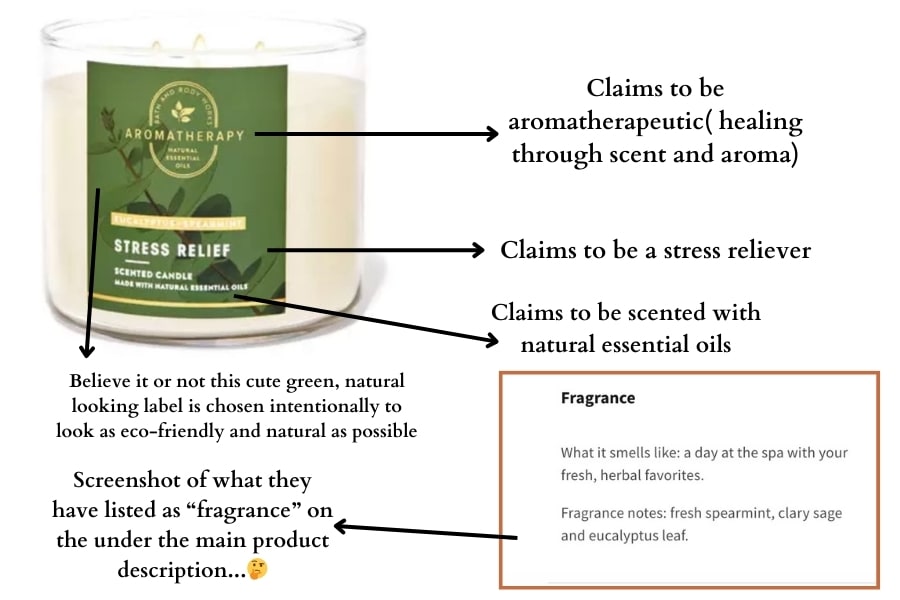
Now here’s a more in depth look at the ingredients….
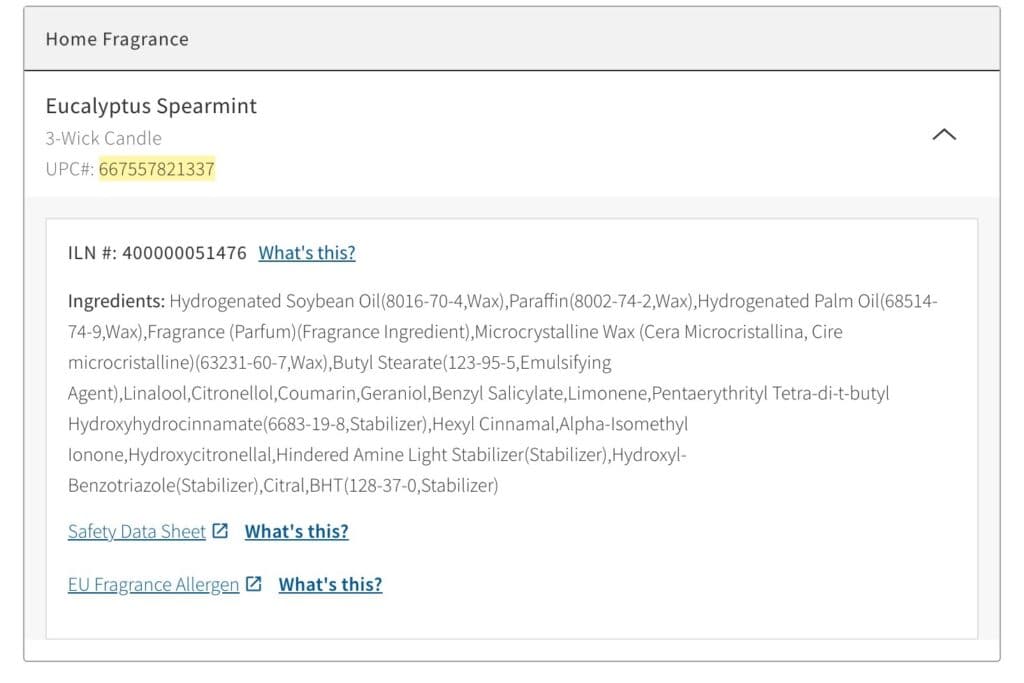
Now let’s go back through their initial claims…
Claim: Made from natural essential oils
Proof: Linalool, Citronellol, Coumarin, Geraniol are associated with different types of essential oils.
However, natural oils doesn’t mean that these oils are organic. But organic(which is better) was never their claim in the first place.
What is concerning is that essential oils are not the only thing used to fragrance this product. Synthetic fragrances hidden in the term: fragrance(parfum) are also present.
Claim: Aromatherapeutic and stress relieving
Proof: So if you look at the ingredients one of the first ingredients is paraffin wax which we know is toxic but the key here is to understand what is released by paraffin wax.
Burning paraffin wax releases Particle Material (PM), along with VOCs and PAHs.
Particle Material is a known contributor to oxidative stress.
Now I know their claim to relieve stress is in a more mental and maybe emotional sense but when has toxic ingredients and negative health effects ever relieved anyones stress or even been therapeutic?
What Do Doctors Have To Say?
Dr. Janine Bowring is a researcher and naturopathic doctor, who warns consumers about scented candles, why you should stop using them, and the harm they can cause.
Health specialists and researchers are becoming more and more concerned with the increased risks associated with scented candles like Bath & Body Works.
Specifically, phthalates, found in synthetic ingredients like fragrances are alarming because of their effects on reproductive development and hormone and endocrine disruption.
Alternatives to Bath and Body Works Candles
Don’t be so down! There are plenty of non-toxic candle alternatives out there such as:
- Soy Wax
- Coconut Wax
- Beeswax
Even beyond candles, we have a couple homemade ways to make our home smell great:
Essential Oil Spray:
Mix 1 cup of water with 10 drops of your favorite non-toxic essential oil. Here is a list of safe essential oils:
- Lavender
- Tea Tree
- Peppermint
- Chamomile
- Rosemary
- Eucalyptus
- Lemon
- Frankincense
- Bergamot
- Geranium
Simmer Pot:
Take a large pot of boiling water and boil a random assortment of smell-good ingredients. Get creative! We often toss together ingredients like:
- Cinnamon, rosemary, thyme, bay leaves, ginger etc.
- Fruits like apples, lemons, oranges, grapefruits, etc.
- Vanilla or almond extract
Things to Remember
- Transparency: Be sure the candles you buy disclose ALL of the ingredients on their labels
- Environmentally friendly: Stick with brands that talk about eco-friendly practices
Buy Local: We love buying some of our candles locally from small businesses as many of them sell non-toxic candles
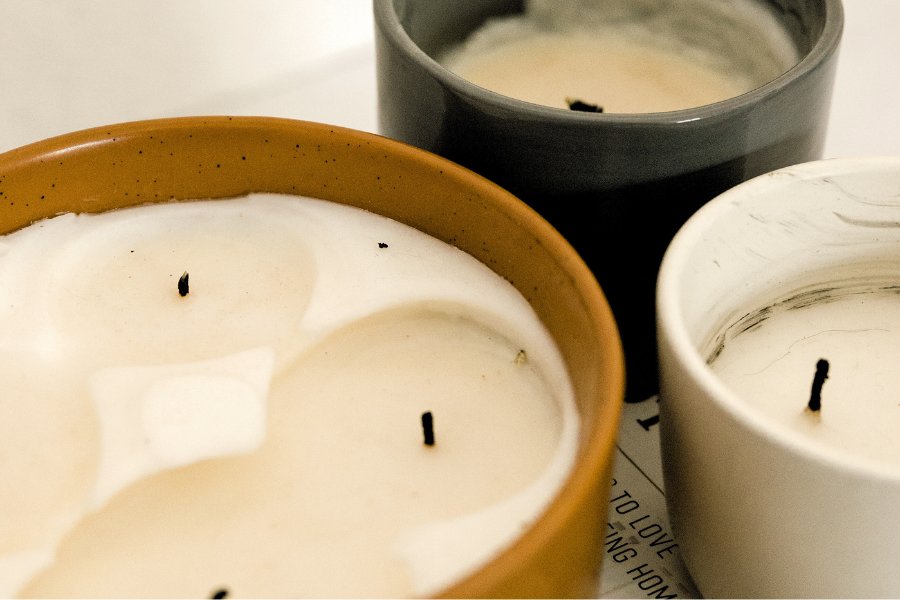
Why I Stopped Buying Bath & Body Works Candles
If you’re someone who loves Bath & Body Works candles and feels discouraged or maybe even a bit betrayed, I know how you feel.
I LOVED Bath & Body Works candles and for me, their candles were a straight-up vibe! fall vibes, a cozy aesthetic, and that warm home sense.
But that’s not all… although it was super hard to give them up. It was worth it. The lack of transparency and concern for human and environmental health was a good enough reason for me to give Bath & Body Works candles up completely.
Final Thoughts 💭
While Bath & Body Works may have betrayed us, there are non toxic candles out there, and making your own is also another great option.
At the end of the day, it’s your decision, and like every product you buy, the choice to choose non toxic is yours and always should be.
Frequently Asked Questions
While the exposure is low there are still small amounts of VOCs being off-gassed into the air.
A lot of the chemicals are within the wax so while burning the candle definitely intensifies chemical emissions, not burning it doesn’t prevent chemical exposure.
Check those ingredients! Non toxic brands will be very transparent about what they put into their candles.
If a brand or candle has the toxic ingredients we’ve discussed such as paraffin wax, synthetic fragrances, additives, or dyes, it’s toxic and harmful to your health.
The safest candles to burn are all-natural ones. Use safe wax like beeswax for crafting, and if adding scent, choose 100% natural and organic ingredients, such as organic essential oils like lavender oil.
Bath & Body Works typically uses a blend of paraffin, soy, and palm wax for different candles.
Headaches from B&BW candles could be caused by fragrance sensitivity, soot from burning paraffin, or even the concentration of the scent.
Just as Bath & Body Works candles are filled with synthetic additives, fragrances, and chemical wax so are Yankee candle products making them just as toxic as any other artificial candles on the market. ☹️

